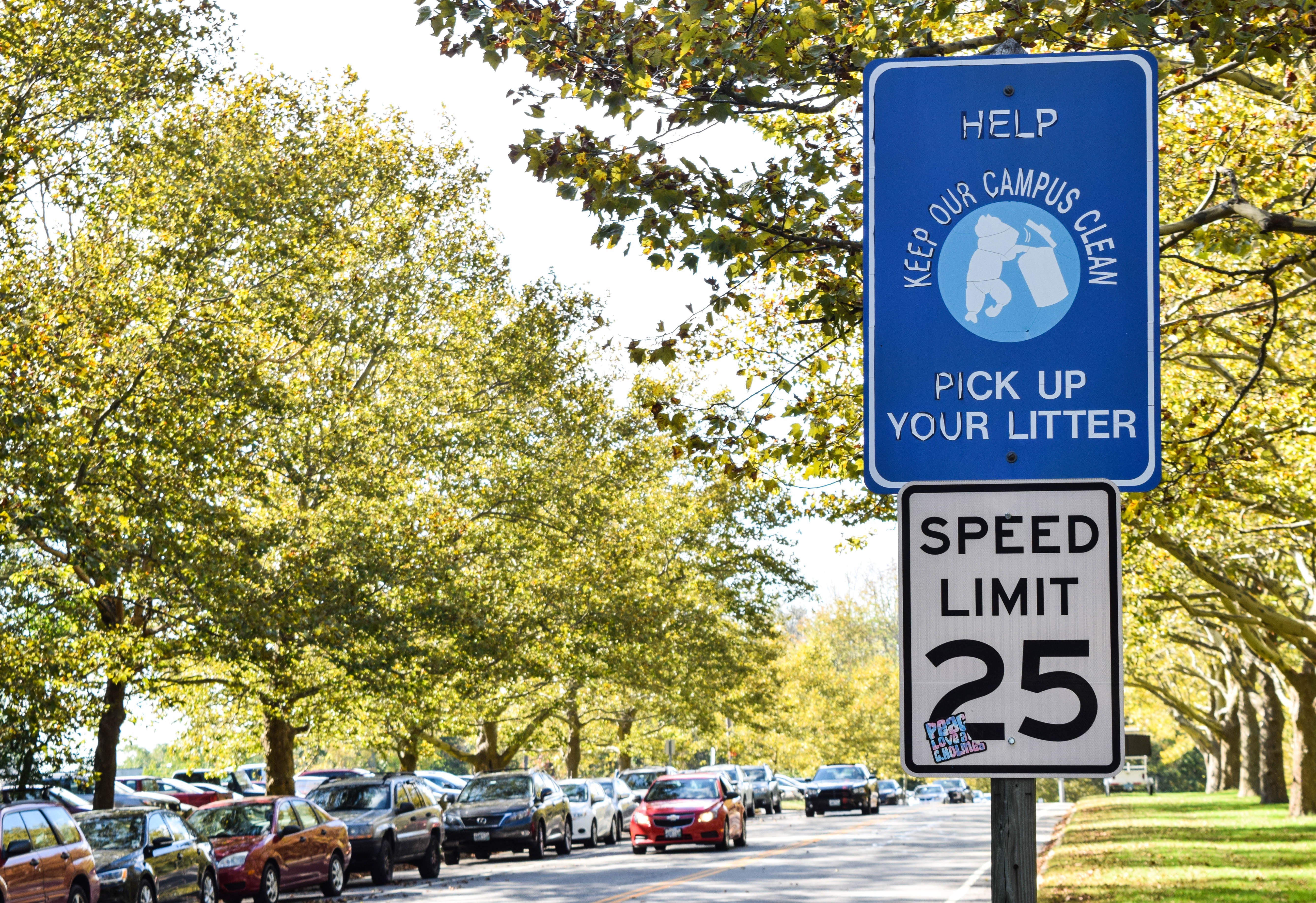Photo by Anna Meassick | The University continues to make efforts to be more sustainable, from picking up litter to LEED buildings.
The United States Department of Education named the University of Rhode Island a Green Ribbon school this year for its efforts in creating a sustainable campus and reducing greenhouse gas emissions.
According to the University’s Green Ribbon Schools report, greenhouse gas emissions have decreased by 30 percent over the past 11 years. Now, students and staff are working to keep the campus sustainable.
Marcia Garcia, campus sustainability officer said, “We’ve done a lot more than a lot of other universities in that we have an inventory of all of our greenhouse gas emissions, so we know where our opportunities are to reduce our emissions or conserve energy use.”
Eleven buildings on campus are Leadership in Energy and Environmental Design (LEED) certified, including Hillside Hall, Fascitelli Fitness and Wellness Center and the Center for Biotechnology and Life Sciences. All new construction projects are planned to meet LEED certification standards.
Garcia said that the University’s “green buildings” are facing north-south instead of east-west to affect the temperature of the buildings when daylight comes through, so they will be cooler and require less air conditioning. The “green buildings” also have energy-saving light bulbs and low-flow toilets. Garcia also mentioned that the roof on Hillside Hall filters rainwater, cooling the building. The residence hall also has a solar panel that heats water.
According to Garcia, URI works with a local outside energy company to help determine how to make the University more sustainable. Some of the company’s suggestions are as simple as putting a cover over the Tootell Aquatic Center pool to prevent having to adjust the room’s temperature and energy use.
“They have been working with the university for close to 12 years,” Garcia said. “They’ve done an inventory or audit on all the different aspects on campus that require energy and ask us to change some things. For example, they told us to remove all the incandescent light bulbs and put all of the compact fluorescent bulbs in them. Now they’re saying to switch to the LED bulbs.”
However, Garcia believes that there are still ways the University could work towards becoming more green. “One thing we’re trying to improve is transportation,” Garcia said. “The overall problem, being we have way too many people, staff, faculty and students, driving themselves in one car. So we built all of these programs not only to discourage people from driving to campus but also to discourage people from driving alone to campus.”
URI has programs in place such as the RIPTA bus pass deal and parking options in Wickford Junction and the Schneider Electric lot for commuters. Garcia also said that there are plans to create a bike path from Peckham Farm that goes through Brookside Apartments. She said there are also plans to institute more electric vehicle charging stations on campus. There are only two stations on campus, one at the Welcome Center and the other at the Sustainability Center.
Garcia reiterated the importance of engaging with the community when promoting sustainability.
“It is about culture change,” Garcia said. “Because we can have all of the most energy efficient things around campus, we can have these great buildings, but if the campus community doesn’t embrace those values, then it doesn’t matter, because the users of the space are what dictate how well we are as a green university.”
Student Action for Sustainability, a student group on campus, has some ideas on how the University could become more sustainable. The club started a petition last year to ban styrofoam cups on campus and continues to raise awareness of waste. The group also believes that the University could benefit from saving energy.
“We can’t really cut down on plastic waste when it comes to the science buildings, but them keeping on the lights is a big thing, a lot of times they don’t turn off the air conditioners, even if they can,” Secretary Naomi Pajarillo said.
When asked of rumors of materials not getting recycled, Vice President Kaylynn Palley said that students had nothing to fear. “That was a huge rumor that makes us very angry,” Palley said. “We can 100 percent tell you that when you recycle stuff [on campus], it’s going to get recycled, I promise you.”
SAS members agreed with Garcia, in that raising awareness was one of the biggest things URI students could do to improve campus sustainability.
“I think URI as a whole is doing pretty well, but there’s always more things to be done,” Palley said. “There’s a lot of stuff that we can’t control, on the administrative level, but we can control how our student population here acts, and their habits.”





